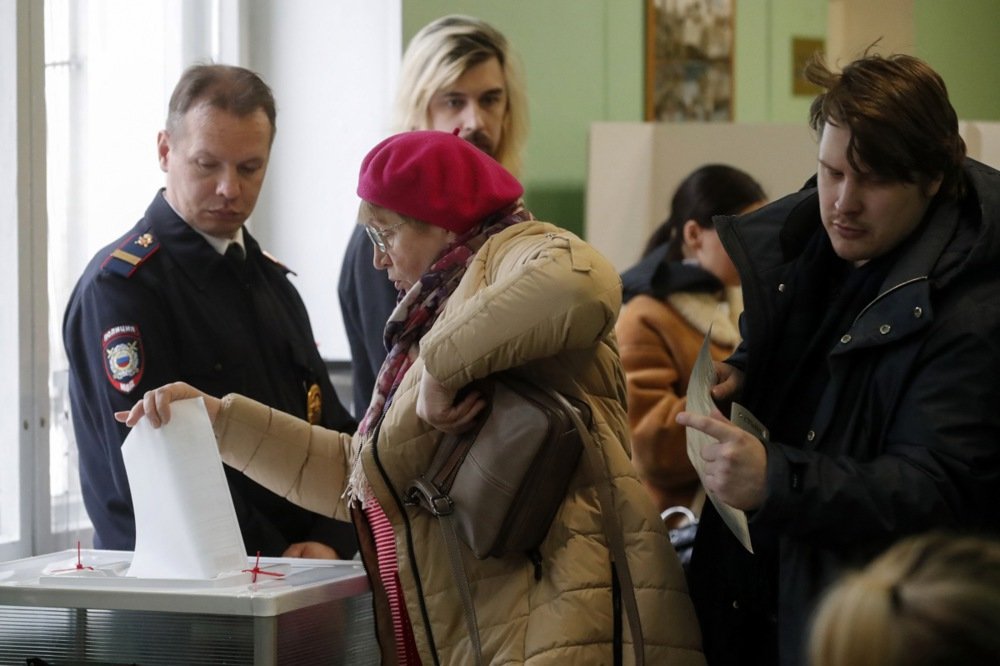
People cast their ballots during the presidential election in Moscow, 17 March 2024. Photo: EPA-EFE/MAXIM SHIPENKOV
Statistical analysis carried out by Novaya Gazeta Europe has shown usually high levels of electoral fraud in at least 46 Russian regions in last weekend’s presidential elections by demonstrating a correlation between turnout and the share of the vote for Vladimir Putin.
In fair elections, plotting turnout against the number of votes for the winning candidate in individual polling stations will produce a scatter plot that forms a discernible oval shaped cloud. This shape can be used as a reference point by which to assess fraud levels in unfair elections. If ballot box stuffing has occurred, both turnout and the winner’s share of the vote will increase, causing the cloud to grow a tail and to become shaped like a comet.
Novaya Gazeta Europe’s analysis of the official results found that there was little to no oval cloud representing fair votes in 41 Russian regions. In another five, the clouds had a clear tail, which tells us that over a third of the votes cast for Vladimir Putin in those regions were falsified.
The method created by mathematician Sergey Shpilkin for identifying voting irregularities cannot be applied to the 41 regions with no oval-shaped cloud, as a cloud is required for comparison. This is only seen in cases of extreme ballot box stuffing.
The Russian regions with the highest levels of fraud, and where numbers can be estimated, were Voronezh, where 48% of all votes for Putin were stuffed ballots, Samara (39%), Lipetsk (38%), Buryatia (36%) and Kaliningrad (34%).
The regions with relatively honest results, i.e. fewer than 10% of votes cast for Putin were falsified, were Arkhangelsk (2%), Kirov (4%), Tomsk (4%) and Altai (5%). This group consists of 15 regions in all. There were three times more “honest” regions — 41 — in the 2018 presidential election and four times more — 59 — in 2000.
Novaya Gazeta Europe didn’t analyse the results of regions with a population of fewer than 180,000 or the annexed and occupied territories of Ukraine.
Novaya Europe has already established that Russian President Vladimir Putin received about 22 million fake votes in the election. According to our analysis, Putin’s real share of the vote in the election could be 57% or lower, depending on the true scale and methods of fraud employed, which are impossible to assess with any accuracy.
